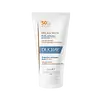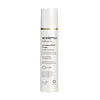What's inside
What's inside
 Key Ingredients
Key Ingredients

 Benefits
Benefits

 Concerns
Concerns

 Ingredients Side-by-side
Ingredients Side-by-side

Water
Skin ConditioningC12-15 Alkyl Benzoate
AntimicrobialDiethylamino Hydroxybenzoyl Hexyl Benzoate
UV FilterEthylhexyl Triazone
UV AbsorberOryza Sativa Starch
AbsorbentPhenylene Bis-Diphenyltriazine
StabilisingGlycerin
HumectantBis-Ethylhexyloxyphenol Methoxyphenyl Triazine
Skin ConditioningPotassium Cetyl Phosphate
EmulsifyingGlyceryl Stearate
EmollientStearyl Alcohol
EmollientTapioca Starch
Vp/Eicosene Copolymer
Azelaic Acid
BufferingBenzoic Acid
MaskingCaprylyl Glycol
EmollientGlyceryl Behenate
EmollientGlyceryl Dibehenate
EmollientPPG-1-PEG-9 Lauryl Glycol Ether
EmulsifyingCI 17200
Cosmetic ColorantSodium Hydroxide
BufferingTribehenin
EmollientXanthan Gum
EmulsifyingWater, C12-15 Alkyl Benzoate, Diethylamino Hydroxybenzoyl Hexyl Benzoate, Ethylhexyl Triazone, Oryza Sativa Starch, Phenylene Bis-Diphenyltriazine, Glycerin, Bis-Ethylhexyloxyphenol Methoxyphenyl Triazine, Potassium Cetyl Phosphate, Glyceryl Stearate, Stearyl Alcohol, Tapioca Starch, Vp/Eicosene Copolymer, Azelaic Acid, Benzoic Acid, Caprylyl Glycol, Glyceryl Behenate, Glyceryl Dibehenate, PPG-1-PEG-9 Lauryl Glycol Ether, CI 17200, Sodium Hydroxide, Tribehenin, Xanthan Gum
Water
Skin ConditioningEthylhexyl Methoxycinnamate
UV AbsorberButylene Glycol
HumectantPropylene Glycol
HumectantEthylhexyl Triazone
UV AbsorberEthylhexyl Salicylate
UV AbsorberCyclopentasiloxane
EmollientBis-Ethylhexyloxyphenol Methoxyphenyl Triazine
Skin ConditioningButyl Methoxydibenzoylmethane
UV AbsorberPolymethyl Methacrylate
Bis-PEG-18 Methyl Ether Dimethyl Silane
EmollientBellis Perennis Flower Extract
Skin ConditioningMica
Cosmetic ColorantIsostearyl Alcohol
EmollientTitanium Dioxide
Cosmetic ColorantAcrylates/C10-30 Alkyl Acrylate Crosspolymer
Emulsion StabilisingNicotiana Benthamiana Hexapeptide-40 Sh-Polypeptide-2
Skin Conditioning3-O-Ethyl Ascorbic Acid
Skin Conditioning4-Butylresorcinol
AntioxidantAlcohol
AntimicrobialAlcohol Denat.
AntimicrobialAscorbyl Palmitate
AntioxidantAzelaic Acid
BufferingBHT
AntioxidantButylene Glycol Cocoate
EmulsifyingCaprylic/Capric Triglyceride
MaskingCaprylyl Glycol
EmollientCarbomer
Emulsion StabilisingCitric Acid
BufferingDecyl Glucoside
CleansingDiacetyl Boldine
Skin ConditioningDimethicone
EmollientDipotassium Phosphate
BufferingDisodium EDTA
Disodium Phosphate
BufferingEthylcellulose
Ethylhexylglycerin
Skin ConditioningGlycerin
HumectantGlyceryl Oleate
EmollientGlyceryl Stearate
EmollientHexylene Glycol
EmulsifyingLecithin
EmollientMelissa Officinalis Leaf Extract
Skin ConditioningParfum
MaskingPhenethyl Alcohol
MaskingPhenoxyethanol
PreservativePolysilicone-11
Polysorbate 20
EmulsifyingPotassium Phosphate
BufferingSilica
AbrasiveSodium Chloride
MaskingSodium Cholate
Skin ConditioningSodium Hydroxide
BufferingTocopherol
AntioxidantTranexamic Acid
AstringentUndecylenoyl Phenylalanine
Skin ConditioningWater, Ethylhexyl Methoxycinnamate, Butylene Glycol, Propylene Glycol, Ethylhexyl Triazone, Ethylhexyl Salicylate, Cyclopentasiloxane, Bis-Ethylhexyloxyphenol Methoxyphenyl Triazine, Butyl Methoxydibenzoylmethane, Polymethyl Methacrylate, Bis-PEG-18 Methyl Ether Dimethyl Silane, Bellis Perennis Flower Extract, Mica, Isostearyl Alcohol, Titanium Dioxide, Acrylates/C10-30 Alkyl Acrylate Crosspolymer, Nicotiana Benthamiana Hexapeptide-40 Sh-Polypeptide-2, 3-O-Ethyl Ascorbic Acid, 4-Butylresorcinol, Alcohol, Alcohol Denat., Ascorbyl Palmitate, Azelaic Acid, BHT, Butylene Glycol Cocoate, Caprylic/Capric Triglyceride, Caprylyl Glycol, Carbomer, Citric Acid, Decyl Glucoside, Diacetyl Boldine, Dimethicone, Dipotassium Phosphate, Disodium EDTA, Disodium Phosphate, Ethylcellulose, Ethylhexylglycerin, Glycerin, Glyceryl Oleate, Glyceryl Stearate, Hexylene Glycol, Lecithin, Melissa Officinalis Leaf Extract, Parfum, Phenethyl Alcohol, Phenoxyethanol, Polysilicone-11, Polysorbate 20, Potassium Phosphate, Silica, Sodium Chloride, Sodium Cholate, Sodium Hydroxide, Tocopherol, Tranexamic Acid, Undecylenoyl Phenylalanine
Ingredients Explained
These ingredients are found in both products.
Ingredients higher up in an ingredient list are typically present in a larger amount.
Azelaic acid is a multitasker ingredient that helps treat acne, pigmentation, and irritation. It is a great option for sensitive skin.
What makes azelaic special?
The best thing about azelaic acid is it's gentleness. It's generally well-tolerated and safe to use alongside other actives like niacinamide or salicylic acid.
Unlike AHAs, azelaic acid will not make you photosensitive/sun sensitive.
You can find this ingredient naturally occurring in grains like wheat, rye, and barley. In cosmetics, azelaic acid is typically lab-made, which is more stable and effective.
Learn more about Azelaic AcidYou might know this ingredient as Tinosorb S or Bemotrizinol. It is a UV filter that covers both UVA and UVB rays.
This ingredient has two peak UV absorption peaks ( 310 and 340 nm) and is able to absorb both UV-A and UV-B rays. This ingredient works by preventing UV rays from reaching and damaging your skin.
On top of that - it is highly photostable and helps prevent the photodegration of other sunscreen ingredients such as avobenzone.
Tinosorb S is allowed in the EU, Australia, and Asia. It is close to being approved by the FDA and we'll hopefully get this ingredient in the U.S. by late 2025.
Fun fact: Tinosorb S is the most effective UV absorber at maximum concentration (measured by SPF) permitted in the EU.
This ingredient is oil-soluble, so your oil-cleansers will take this right off at night.
Learn more about Bis-Ethylhexyloxyphenol Methoxyphenyl TriazineCaprylyl Glycol is a humectant and emollient, meaning it attracts and preserves moisture.
It is a common ingredient in many products, especially those designed to hydrate skin. The primary benefits are retaining moisture, skin softening, and promoting a healthy skin barrier.
Though Caprylyl Glycol is an alcohol derived from fatty acids, it is not the kind that can dry out skin.
This ingredient is also used as a preservative to extend the life of products. It has slight antimicrobial properties.
Learn more about Caprylyl GlycolEthylhexyl Triazone is a modern chemical sunscreen that protects from UV-B radiation.
It is the most effective of existing UV-B filters, as it provides the highest level of photo-stable absorption. It protects from the entire UV-B range (280 to 320nm), with it's highest level of protection at 314nm.
Ethylhexyl Triazone is oil soluble, oderless and colorless, which mean it is able to be incorporated into a variety of different formulations.
It is not currently available within the United States due to slow changing FDA regulations. Outside of the US, it is used in formulations at concentrations up to 5%.
Learn more about Ethylhexyl TriazoneGlycerin is already naturally found in your skin. It helps moisturize and protect your skin.
A study from 2016 found glycerin to be more effective as a humectant than AHAs and hyaluronic acid.
As a humectant, it helps the skin stay hydrated by pulling moisture to your skin. The low molecular weight of glycerin allows it to pull moisture into the deeper layers of your skin.
Hydrated skin improves your skin barrier; Your skin barrier helps protect against irritants and bacteria.
Glycerin has also been found to have antimicrobial and antiviral properties. Due to these properties, glycerin is often used in wound and burn treatments.
In cosmetics, glycerin is usually derived from plants such as soybean or palm. However, it can also be sourced from animals, such as tallow or animal fat.
This ingredient is organic, colorless, odorless, and non-toxic.
Glycerin is the name for this ingredient in American English. British English uses Glycerol/Glycerine.
Learn more about GlycerinGlyceryl Stearate is a mix of glycerin and stearic acid.
It is used to stabilize the mixing of water and oil ingredients. By preventing these ingredients from separating, it can help elongate shelf life. It can also help thicken the product's texture.
As an emollient, it helps soften skin and supports barrier-replenishing ingredients.
In cosmetics, Glyceryl Stearate is often made from vegetable oils or synthetically produced.
This ingredient may not be fungal-acne safe
Fun fact: The human body also creates Glyceryl Stearate naturally.
Learn more about Glyceryl StearateSodium Hydroxide is also known as lye or caustic soda. It is used to adjust the pH of products; many ingredients require a specific pH to be effective.
In small amounts, sodium hydroxide is considered safe to use. However, large amounts may cause chemical burns due to its high alkaline.
Your skin has a natural pH and acid mantle. This acid mantle helps prevent harmful bacteria from breaking through. The acid mantle also helps keep your skin hydrated.
"Alkaline" refers to a high pH level. A low pH level would be considered acidic.
Learn more about Sodium HydroxideWater. It's the most common cosmetic ingredient of all. You'll usually see it at the top of ingredient lists, meaning that it makes up the largest part of the product.
So why is it so popular? Water most often acts as a solvent - this means that it helps dissolve other ingredients into the formulation.
You'll also recognize water as that liquid we all need to stay alive. If you see this, drink a glass of water. Stay hydrated!
Learn more about Water